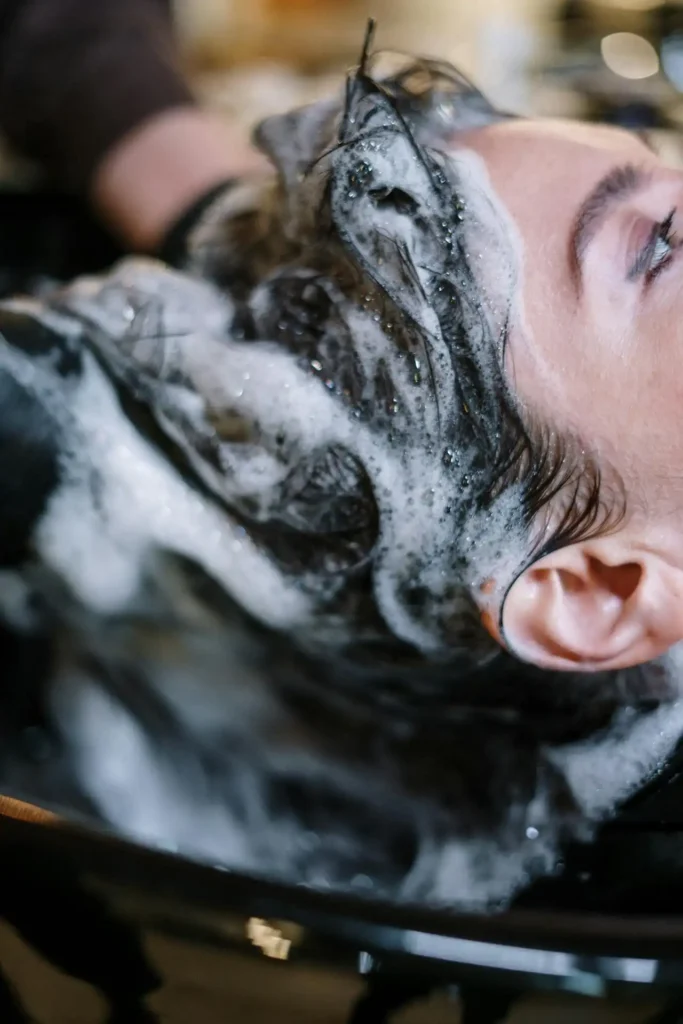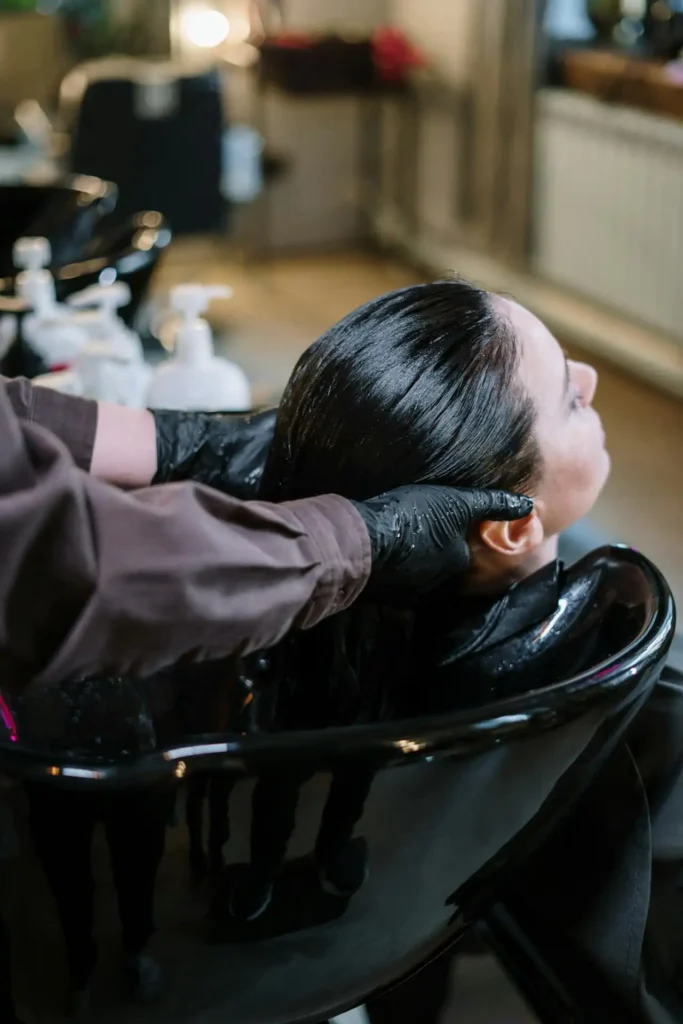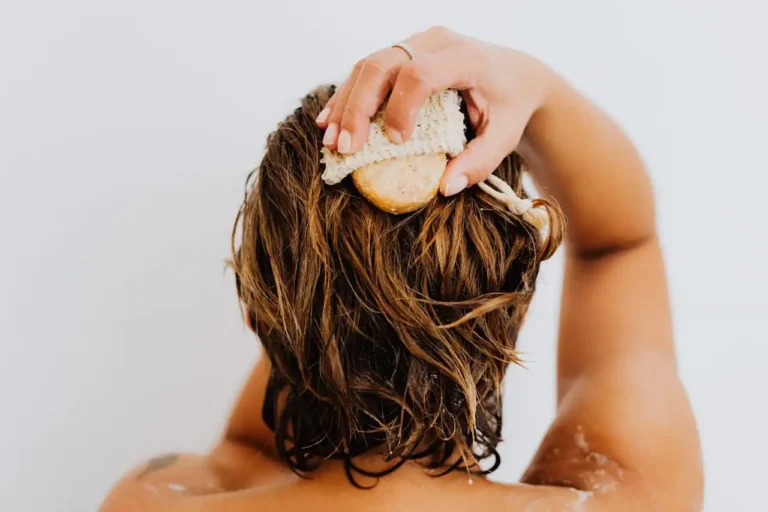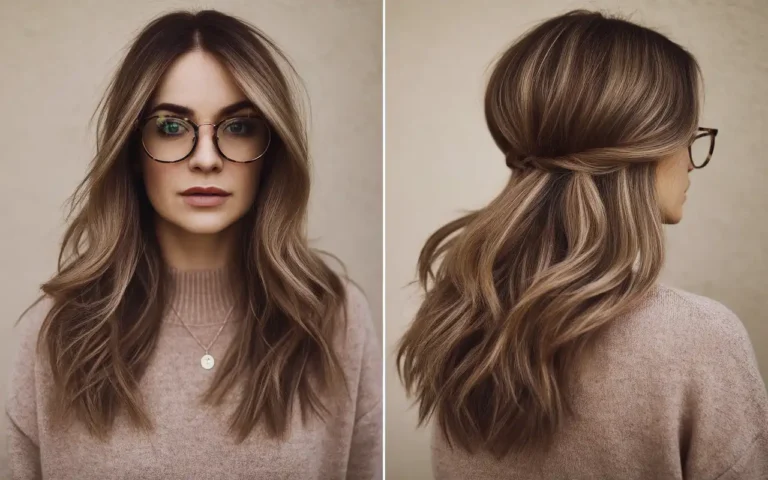How to Transition from Heat Styling to Natural Hair
You’ve spent years reaching for your blow dryer, flat iron, or curling wand every morning.
Now you’re ready to embrace your natural texture and give your hair a break from heat damage.
This journey requires patience, new techniques, and a complete mindset shift, but the healthy, beautiful results make every challenge worthwhile.
Understanding Your Hair’s Recovery Process

Your hair needs time to recover from years of heat damage, and this process happens gradually rather than overnight.
Heat styling strips away your hair’s natural moisture and breaks down the protein structure that gives strands their strength and elasticity.
The recovery timeline varies for everyone, but most people notice significant improvements after three to six months of consistent heat-free care.
Your hair’s porosity, thickness, and previous damage level all influence how quickly you’ll see results.
During the early weeks, your hair might feel different than expected. Strands that seemed smooth and manageable with heat styling may initially appear frizzy or unruly.
This temporary phase occurs because your hair is adjusting to its natural state without artificial smoothing.
Don’t let initial challenges discourage you from continuing your journey. Your hair’s natural texture will gradually emerge as damaged ends grow out and healthy new growth takes their place.
Preparing Mentally and Physically for the Journey
Transitioning to natural hair requires both mental preparation and practical changes to your hair care routine.
Set realistic expectations about the timeline and potential challenges you’ll face along the way.
Start by researching your hair type and porosity level. This knowledge helps you choose appropriate products and techniques that work specifically for your hair’s unique needs.
Online quizzes and professional consultations can guide you toward understanding your hair’s characteristics.
Invest in quality tools designed for natural hair care. Wide-tooth combs, microfiber towels, and silk pillowcases become essential items in your new routine.
These tools minimize breakage and help maintain your hair’s moisture levels. Create a support system by connecting with others on similar journeys.
Online communities, social media groups, and local meetups provide encouragement, advice, and inspiration when you encounter difficulties.
Mastering Gentle Cleansing Techniques

Your cleansing routine forms the foundation of healthy natural hair care. Switch from harsh sulfate shampoos to gentle, moisturizing cleansers that clean without stripping away natural oils.
Co-washing, or conditioner-only washing, works well for many people transitioning to natural hair.
This method uses cleansing conditioners to remove dirt and product buildup while maintaining moisture.
Experiment with different co-washing products to find formulas that clean effectively without weighing down your hair.
Clarifying shampoos still have their place in your routine, but use them sparingly. Follow clarifying sessions with intensive deep conditioning treatments.
Once or twice monthly, use a clarifying product to remove stubborn buildup from styling products or environmental pollutants.
Pre-poo treatments protect your hair during the cleansing process. Apply oils or conditioning treatments before washing to create a barrier that prevents excessive moisture loss.
Coconut oil, olive oil, or specialized pre-poo products all work effectively for this purpose.
Prioritizing Moisture and Deep Conditioning
Natural hair thirsts for moisture more than heat-styled hair because the curl pattern makes it harder for natural oils to travel down the hair shaft.
Develop a consistent moisturizing routine that addresses your hair’s specific needs.Deep conditioning becomes a weekly non-negotiable in your new routine.
Choose protein-free deep conditioners initially, as your heat-damaged hair likely needs moisture more than protein strengthening.
Look for ingredients like shear butter, glycerin, and natural oils. The LCO or LOC method helps lock moisture into your hair strands.
This technique involves applying products in a specific order: Liquid (water or leave-in conditioner), Oil (natural oils), and Cream (styling cream or butter).
Experiment with both orders to see which works better for your hair type.
Steam treatments supercharge your deep conditioning sessions. Use a hair steamer or create steam at home by sitting in a steamy bathroom.
The heat opens your hair cuticles, allowing deep conditioners to penetrate more effectively and provide lasting moisture.
Exploring Protective Styling Options
Protective styles shield your hair from environmental damage and manipulation while it recovers from heat styling.
These styles keep your ends tucked away and reduce daily handling that can cause breakage.
Braids, twists, and buns offer simple protective styling options that you can master at home.
Start with basic techniques and gradually learn more complex styles as your skills improve.
YouTube tutorials and practice sessions help you develop proficiency with different protective styles.
Silk or satin scarves and bonnets protect your hair while you sleep. Cotton pillowcases and bedding absorb moisture from your hair, leading to dryness and tangles.
Switching to silk or satin materials helps maintain your hairstyles and moisture levels overnight.
Low-manipulation styles work well during the transition period when your hair feels fragile.
Twist-outs, braid-outs, and wash-and-go styles require minimal daily handling while still looking polished and put-together.
Navigating the Awkward Transition Phase

Every natural hair journey includes an awkward phase where your hair doesn’t quite cooperate with your styling attempts.
This period typically occurs during the first few months as your hair adjusts to new products and techniques.
Embrace experimentation during this phase rather than fighting against your hair’s natural tendencies.
Try different product combinations, application methods, and styling techniques to discover what works best for your evolving texture.
Headbands, hair accessories, and strategic up-dos become your best friends during challenging hair days.
These styling tools help you feel confident and put-together even when your hair doesn’t cooperate with your original plans.
Professional help can provide guidance during particularly difficult periods.
A stylist experienced with natural hair can assess your hair’s condition, recommend appropriate products, and teach you techniques suited to your specific needs.
Learning Heat-Free Styling Methods
Heat-free styling opens up creative possibilities while protecting your hair’s health.
These techniques often take longer than heat styling but produce beautiful results without causing damage.
Twist-outs and braid-outs create gorgeous curls and waves using your hair’s natural texture.
Apply leave-in conditioner and styling cream to damp hair, then twist or braid sections before allowing them to dry completely. Unravel the twists or braids for defined, bouncy curls.
Roller sets produce smooth, voluminous styles without heat damage. Use foam rollers, flexi-rods, or perm rods on damp hair with styling products.
Allow your hair to air dry completely before removing the rollers for beautiful, lasting curls.
Plopping helps curly hair maintain its natural pattern while drying. After washing, apply styling products and gently squeeze out excess water.
Wrap your hair in a microfiber towel or cotton t-shirt, creating a turban that supports your curls as they dry.
Pin curls and finger waves offer vintage-inspired styling options that work beautifully on natural hair.
These techniques require practice but create elegant looks suitable for special occasions or when you want to try something different.
Supporting Your Hair from the Inside Out
Healthy hair growth starts with proper nutrition and overall wellness.
Your diet directly impacts your hair’s strength, shine, and growth rate, making nutrition an essential part of your natural hair journey.
Protein-rich foods support hair structure and strength. Hydration affects your hair’s moisture levels from within.
Include lean meats, fish, eggs, beans, and nuts in your diet to provide the building blocks your hair needs for healthy growth.
Vegetarian and vegan options like quinoa, lentils, and hemp seeds also supply essential amino acids.
Vitamins and minerals play crucial roles in hair health. Iron, biotin, vitamin D, and omega-3 fatty acids all contribute to strong, healthy hair growth.
Consider having blood work done to identify any nutritional deficiencies that might impact your hair’s progress.
Drink plenty of water throughout the day to support your body’s natural processes and maintain healthy hair growth. Herbal teas and water-rich foods also contribute to your overall hydration levels.
Stress management becomes particularly important during your transition period. High stress levels can impact hair growth and overall hair health.
Incorporate stress-reduction techniques like meditation, exercise, or hobbies that bring you joy and relaxation.
Building Your New Hair Care Routine
Consistency is key to successful natural hair care, so establish a routine that fits your lifestyle and stick with it.
Your routine should include regular cleansing, conditioning, moisturizing, and protective styling elements.
Weekly routines typically include one wash day with deep conditioning, several moisture refresh sessions, and protective styling maintenance.
Adjust the frequency based on your hair’s needs and your schedule constraints. Track your hair’s progress with photos and notes about what works and what doesn’t.
Product rotation prevents your hair from becoming accustomed to specific formulations and potentially plateauing in its progress.
Keep several different products in each category and rotate them regularly to maintain effectiveness.
This documentation helps you identify patterns, successful techniques, and products that consistently deliver good results for your hair type.
Seasonal adjustments become necessary as weather changes affect your hair’s needs.
Summer humidity might require lighter products, while winter dryness calls for heavier, more moisturizing formulations.
Handling Setbacks and Staying Motivated

Setbacks are normal parts of the natural hair journey, and expecting them helps you handle challenges without giving up entirely.
Bad hair days, product failures, and technique mishaps happen to everyone learning to care for their natural hair.
Learn from each setback rather than viewing them as failures. Analyze what went wrong, adjust your approach, and try again with new knowledge.
This growth mindset helps you continuously improve your natural hair care skills. Connect with your “why” for choosing natural hair when motivation wanes.
Celebrate small victories along the way to maintain motivation during challenging periods.
Notice improvements in your hair’s moisture levels, reduced breakage, or successful styling days. These positive changes indicate that your efforts are paying off.
Whether it’s improved hair health, time savings, or personal authenticity, remembering your original motivation helps you push through difficult phases.
Conclusion
Transitioning to natural hair transforms both your appearance and relationship with self-care.
Embrace the journey’s challenges and celebrate your hair’s unique beauty as it emerges.






